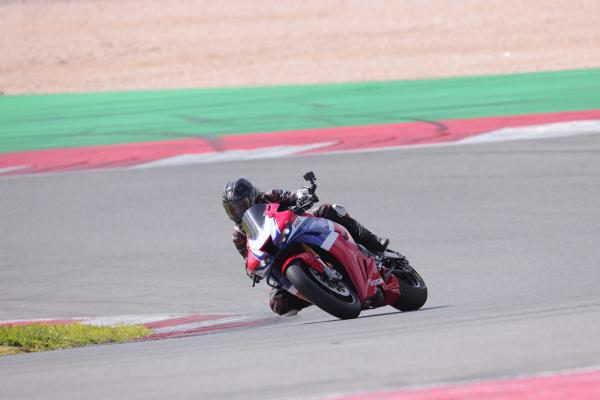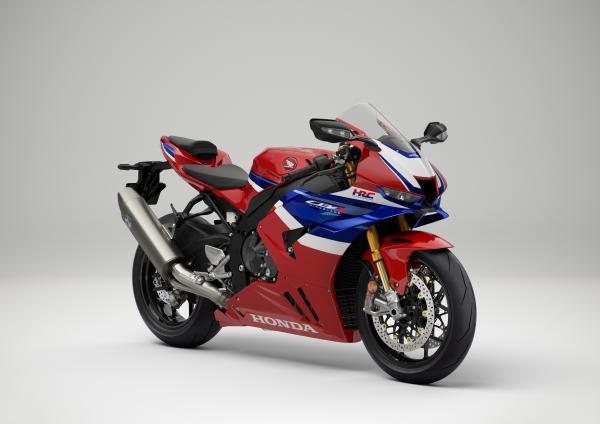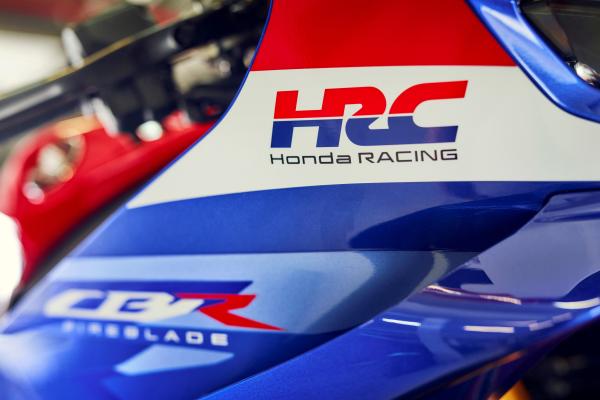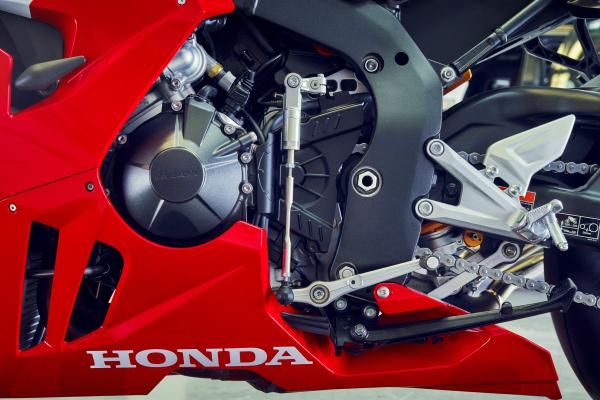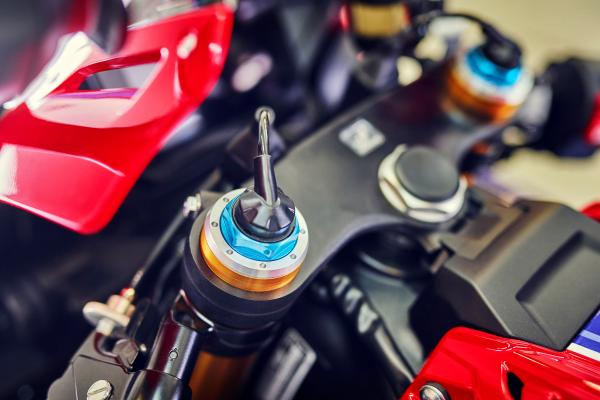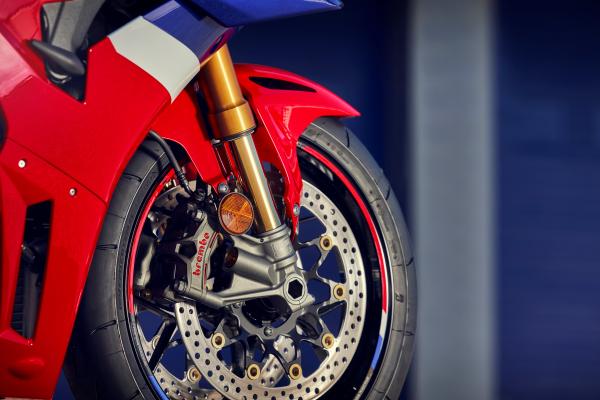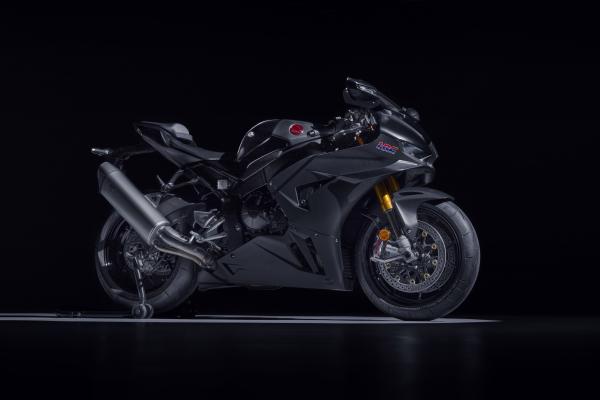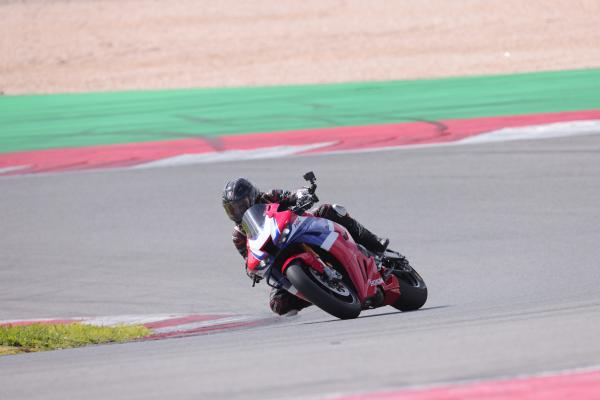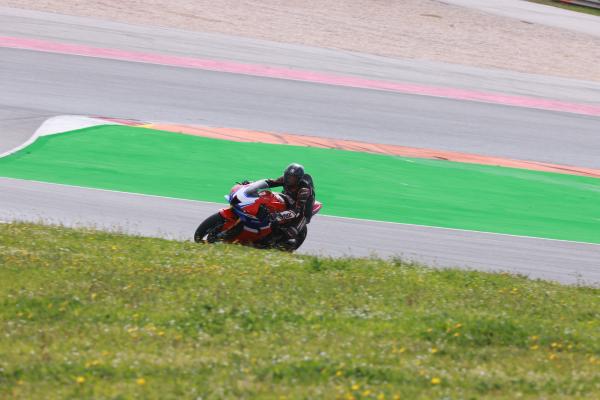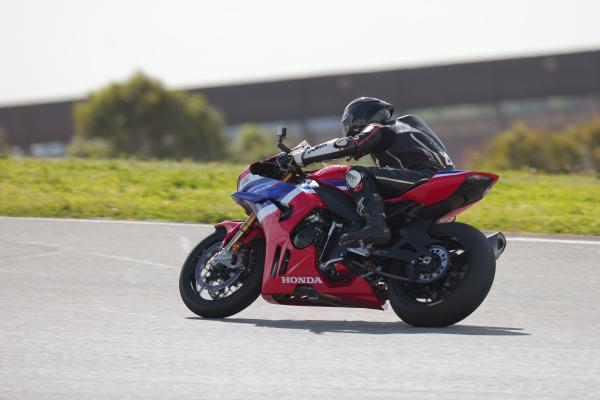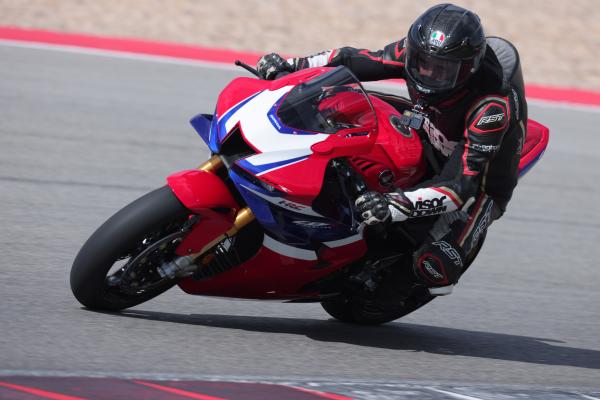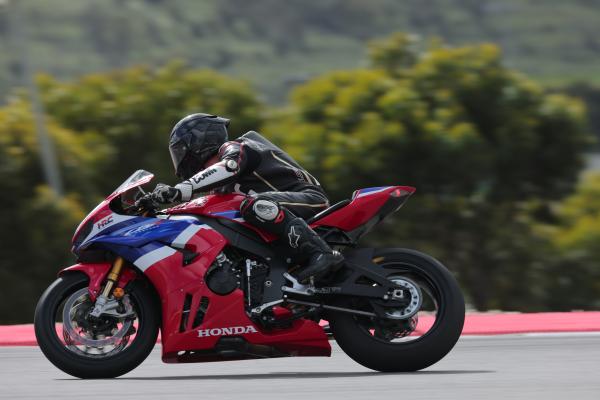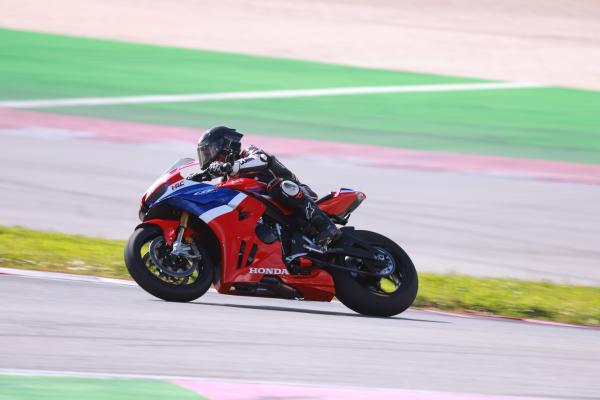2024 Honda CBR1000RR-R SP Review
With a host of new tech, aero, mechanicals and more, the new 2024 Honda Fireblade is a very different beast compared to the previous generation

Member for
54 years 8 monthsThe Honda CBR1000RR-R SP has gone through its biggest evolution since 2020, with visual, mechanical, and technological updates for the 2024 model year.
As you’d expect for a top-flight sport bike, the updates are aimed at making the bike quicker on the track, stronger in the corners, and faster down the straights.
To skip straight to how we got on at the Portimao circuit, click this link.
What’s new with the 2024 Fireblade
The 2024 bike is a mid-life refresh rather than a new generation, but it still features new chassis components, a revised engine, and new wings.
Starting with the bodywork, the eagle-eyed among you will notice that the winglets of the bike are radically different to those found on the outgoing model. That bike featured a multi-wing design that was shrouded into the side fairing of the bike. That changes for 2024, and the latest bike utilises an aero package that is not dissimilar to that found on the Repsol Honda Marc Marquez campaigned in the 2018 MotoGP World Championship.
The revised aero is claimed to ‘restrict lift under acceleration while improving braking stability’ with Honda going on to claim that the fairing creates the same amount of downforce as the old design, with 10 per cent less ‘yaw moment’ which should lead to improved high-speed cornering.
Moving away from the fairing sides, the lower fairing now extends closer to the rear tyre and includes a step out to help airflow around the back wheel. Further back the hugger of the bike has been tweaked and now features a cut-out to vent air from underneath either side of the swingarm, something that Honda claims should reduce rear lift.
Not strictly an aero change but worth noting is the new fuel tank design. It’s still the low-set GP-style design of old, but now reshaped to improve knee grip when hanging off the bike and with four litres more capacity - taking the total fuel capacity to 16.5 litres.
The engine of the new ‘Blade has had a lot of work done, and while peak power remains the same (214 bhp at 14,000 rpm) the work is centred around improving mid-range grunt and control at the corner exit. Like the power, the peak torque remains the same (83 lb ft at 12,000) although revised valve timing (duration and lift) along with an increased compression ratio should help with that.
The architecture of the engine is the same as before (81mm bore and 48.5mm stroke) although new forged TI-64A Titanium conrods boast a 50 per cent weight reduction, while new crankpin journals shed 450 grams from the internals. The intake valves are also lighter for this year and sit in ports that have been further optimised for airflow. The gearbox of the new bike also features revised ratios throughout and a new final drive, something that Honda is hoping will improve the bike's performance at the corner exit.
The final big change is the move to a two-motor throttle-by-wire (TBW) system. This splits the four intake butterflies, with one motor controlling intakes one and two, and another motor looking after three and four. Smaller throttle movements will open intakes one and two first, allowing the engine to get up to speed before all the throttle intakes are opened. Conversely, when decelerating, and with the throttle completely closed, butterflies three and four will remain open to aid engine braking. Meanwhile, the throttles on cylinders one and two remain shut yet poised to open at the next actuation of the throttle.
2024 CBR1000RR-R SP Carbon Edition announced
Another change to the range for this year is the inclusion of an achingly beautiful carbon edition of Honda’s top-spec superbike. As the name suggests it is dripping in matt finished carbon fibre, with the bodywork, mudguard, under tray, winglets, all being created from the material. As well as making this, quite possibly, the best looking modern generation Fireblade, it also boasts a 1 kg weight saving over the stock bike.
Just 300 Carbon Editions will be built, with a commemorative plaque on the airbox cover advertising the bike’s exclusivity.
What’s it like to ride?
Having not been to Portimao before, I was glad we’d already had a morning on track on the newly revived CBR600RR to allow me to get at least an idea of where it goes. I was even more happy to see the rain clouds disperse and bright sunshine replace the clouds. As the track dried, it became clear that slick tyres were the way forward. So a triple whammy: a dry(ish) track that I knew, slick hoops, and the new CBR1000RR-R to play with.
I say ‘dry(ish)’ as there were still a few patches of dampness in all the places you don’t want them, so I took it easy, built my pace, and was happy to see John McGuinness place himself in front of me for a few sighting laps.
Engine updates and damp track aside, I’m still a big fan of the Fireblade chassis. Even in these conditions it just feels like such a well-balanced and silky-smooth thing to ride. There have been changes for this year, mainly working on the stiffness of the frame in certain places to add some feel, but it didn’t need any of that. It did need a bit of work to give the engine a bit more oomph in low and mid-range revs.
The engine I’ll come onto, but the very first thing you notice about the 2024 model - even before you’ve turned a wheel - is the riding position. Honda has made this bike much more accommodating and, if you ride your ‘Blade predominantly on the road, a much easier thing to live with. The lower pegs are the first thing you’ll notice, and I’ll admit that, even for my diminutive pins, it was a struggle to find them on the old machine, but a 16mm drop in the peg height helps that massively, and your knees won't clash with your elbows quite so much if you’re a normal height. The bars, too, are much more relaxed, being higher and closer to you, and they felt, to me, to be slightly less swept back, although Honda didn’t mention anything about this, specifically. You can still get your body into the positions needed, but when chasing lap times isn’t the key objective, it’ll be a million times nicer to ride.
The second thing you’ll notice is the item that Honda has spent a lot of time and money on improving: the engine. From the first moment you gently crack the throttle, the initial drive from the inline four-cylinder 999cc engine feels very different. It’s all (I’m told) down to the two-motor split throttles, and it’s something that the Portimao circuit highlights perfectly with its couple of sweeping hairpins. At the initial moment I open the throttle, it’s not so much about driving the bike instantly out of the apex, it’s more about getting the suspension back under tension and ready to go. That is a lot easier to do when you only have two of the four pistons doing the donkey work. You can accurately and extremely precisely open the throttle at the apex and then pretty much as hard as you like, crank it open and the bike will just smoothly push on forwards with an urgency you didn’t get with the last generation. There’s also nothing to hint that the other two throttle bodies (3 and 4) have opened, just an audible lift in the engine note as it begins to sing on all four cylinders. Once the engine is breathing as nature intended it will then shriek its way to the red line in just the same world-blurring way the previous model did. It’s a beautifully set up system, and one of those things that, had it been done without care and consideration, could easily hamper you more than it could help.
And while I’m talking about the sound of the bike, I’m still confused as to how this thing is Euro5+ compliant - it sounds so bloody good. Screaming down the start-finish straight at Portimao the Fireblade engine is battering the grandstand with sound, and every drop of it is fired back at us on the pit wall at the opposite side. It sounds like a race bike from stock, and makes you wonder why some bikes need whisper-quiet exhausts to get through the Euro emissions regulations! It’s not been a totally free ride for Honda on this front and, yes, your eyes don’t deceive you, that is a slightly larger ending sitting on the right-hand side of the bike. It’s a full litre bigger internally and has had a chunk of internal work done to make sure it breathes optimally and keeps the volume down at those magic testing revs. From the riding seat, it doesn’t sound any quieter - if anything, the new bike sounds better than it did before.
As mentioned above, the split throttles mean the engine can increase the engine braking effect, by opening throttles 1 and 2 and closing the exhaust valve. The system sort of turns the engine into a compressor, sucking air in and then not allowing it to disappear off up the exhaust. A sexy by-product of this is an awesomely angry gurgling noise from within the airbox. Mr. McGuinness was a huge fan of this, claiming it made him feel like he was riding a WorldSBK-spec machine. I thought it made the bike sound more like a mid-2010s F1 car when blown diffusers were all the rage and the engines sounded like they were chewing bolts as they slowed into corners. It’s not quite so pronounced as that, but yeah, it’s definitely there.
Honda CBR1000RR-R SP Fireblade verdict
Realistically, this was a big test for Honda’s flagship sports bike, not just to improve the machine for us mere mortals, but also because of what this bike means for the teams that use them on the track. Win on Sunday, sell on Monday. It’s always been the adage, and it’s still true today. People rarely want to own the third- or fourth-best-performing machine in a championship. They want the top dog, the real deal. They want the bike they see parked in Parc Ferme. The Honda hasn’t always been that, but I have a feeling that next season, if the teams can get their heads around the changes, might be a very different story.
‘But what does the new Fireblade mean for us?’ I hear you cry. Simply put, the 2024 model has got better in every area it was lacking before. It took a little step when the Anniversary model was launched - the bike we rode at Donington in 2022 - with a smattering of upgrades that, at the time, felt like a stop-gap while bigger pots were on the boil in the Honda kitchen. It seems as though that was the case. The new Fireblade is now faster, more finessed and really is the polished diamond, it was always meant to be.
Honda CBR1000RR-R SP Fireblade spec
ENGINE | |
Type | Liquid-cooled 4-stroke 16-valve DOHC Inline-4 |
Engine Displacement (cm³) | 1000cc |
No. of Valves per Cylinder | 4 |
Bore Stroke (mm) | 81mm x 48.5mm |
Compression Ratio | 13.6:1 |
Max. Power Output | 160kW (214 bhp) @ 14,000rpm |
Max. Torque | 113Nm (83 lb ft) @ 12,000rpm |
Noise Level | Urban 76.2dB, Lwot 81.1dB |
Oil Capacity | 4.0L |
FUEL SYSTEM | |
Carburation | PGM-FI |
Fuel Tank Capacity | 16.5L |
C02 Emissions WMTC | 155g/km |
Fuel Consumption | 14.9km/L (6.7L/100km) |
ELECTRICAL SYSTEM | |
Starter | Electric |
Battery Capacity | 12-2.3Ah HJ12L(Li-ion |
DRIVETRAIN | |
Clutch Type | Wet, multiplate clutch |
Transmission Type | Manual 6-speed |
Final Drive | Chain |
FRAME | |
Type | Aluminium Twin Tube composite twin spar |
CHASSIS | |
Dimensions (L x W x H) | 2,105mm x 750mm x 1,140mm |
Wheelbase | 1,455mm |
Caster Angle | 24°7’ |
Trail | 101.9mm |
Seat Height | 830mm |
Ground Clearance | 130mm |
Kerb Weight | 201kg 200kg Carbon Edition |
SUSPENSION | |
Type Front | Öhlins 43mm S-EC3.0 (Spool Valve) NPX USD forks, with preload, compression and rebound adjustments, 125mm stroke. |
Type Rear | Öhlins TTX36 S-EC3.0 (Spool Valve) Pro-Link swingarm with preload, compression and rebound damping, 143mm stroke. |
WHEELS | |
Rim Size Front | 17 inch x MT3.5 |
Rim Size Rear | 17 inch x MT6.0 |
Tyres Front | 120/70-ZR17 M/C (58W) Pirelli Diablo Supercorsa SP V3 Bridgestone RS11 |
Tyres Rear | 200/55-ZR17 M/C (78W) Pirelli Diablo Supercorsa SP V3 Bridgestone RS11 |
BRAKES | |
ABS System Type | 2 channel |
Front | 330mm disc with radial-mount 4-piston Brembo Stylema R caliper |
Rear | 220mm disc with 2-piston Brembo caliper |
INSTRUMENTS & ELECTRICS | |
Instruments | TFT-LCD |
Security System | Honda Smart Key |
Headlight | LED |
Taillight | LED |
Auto Winker Cancel | Yes |
Emergency Stop Signals | Yes |
Quickshifter | Yes |
